Strategic marketing management turns scattered efforts into a repeatable system for small businesses.
The payoff is clear: steady leads that drive measurable growth.
In this article, you’ll learn how to build a strategic marketing approach that makes every marketing dollar work harder. You’ll also get a four-step framework and practical tactics that integrate with your sales processes.
Key takeaways from strategic marketing
Strategic marketing online aligns all marketing activities with business goals, creating predictable revenue growth instead of marketing experiments.
Focusing marketing efforts on channels and content that reach the right prospects improves conversion speed and efficiency.
Integrating marketing campaigns with CRM and sales processes reduces lost leads and makes follow-up more effective.
Pipedrive helps your team set goals and track your strategic marketing impact in real-time – try it free for 14 days.
What is strategic marketing? (and why most advice doesn’t work for SMBs)
Strategic marketing definition: Strategic marketing means having a clear plan and purpose that aligns with your business goals for every marketing activity.
This approach helps companies avoid random acts of marketing, where you might launch a campaign or write an article without knowing how it contributes to business growth.
For small and medium businesses (SMBs), being strategic means using your marketing spend and resources even more efficiently.
Example. A project management SaaS startup publishes blog posts sporadically, based on topics the sales team suggests. Traffic is inconsistent and the blog posts don’t generate many leads.
The marketing lead does market research and maps topics to the customer journey. Each new post nurtures leads and directly supports sales.
Much of the strategic marketing advice out there has large enterprises in mind. It often assumes you have a big team, deep budgets and time to test multiple approaches at once.
Typical advice may include strategies like advanced market segmentation – which requires digging through lots of data – or public relations campaigns that rely on costly agencies and media connections.
When you have fewer resources, an SMB marketing strategy should integrate with your existing workflows – not require a complete organizational overhaul.
The 4-step strategic marketing framework for SMBs
Following a framework helps keep your marketing team on track and working toward the same goal.
These four steps take you from the decision-making and planning process to a fully-fledged marketing strategy.
1. Align your strategic marketing plan with sales objectives
Start with your sales targets and work backward to determine what marketing needs to deliver.
While getting more social media followers or newsletter subscribers is good, revenue is the clearest measure of success for SMBs.
Download Your Sales and Marketing Strategy Guide
Aligning marketing with sales goals ensures that every activity contributes to the key results, such as generating leads or shortening the sales cycle.
You can use customer relationship management (CRM) data to help set your marketing objectives.
Example: One in five leads typically becomes a customer. Since your goal is 10 new customers this quarter, your marketing objective is to generate 50 qualified leads. By focusing on specific outcomes, you easily measure the impact of your strategic marketing efforts.
Using Pipedrive as your CRM, you can set a goal for how many new leads enter your sales pipeline.
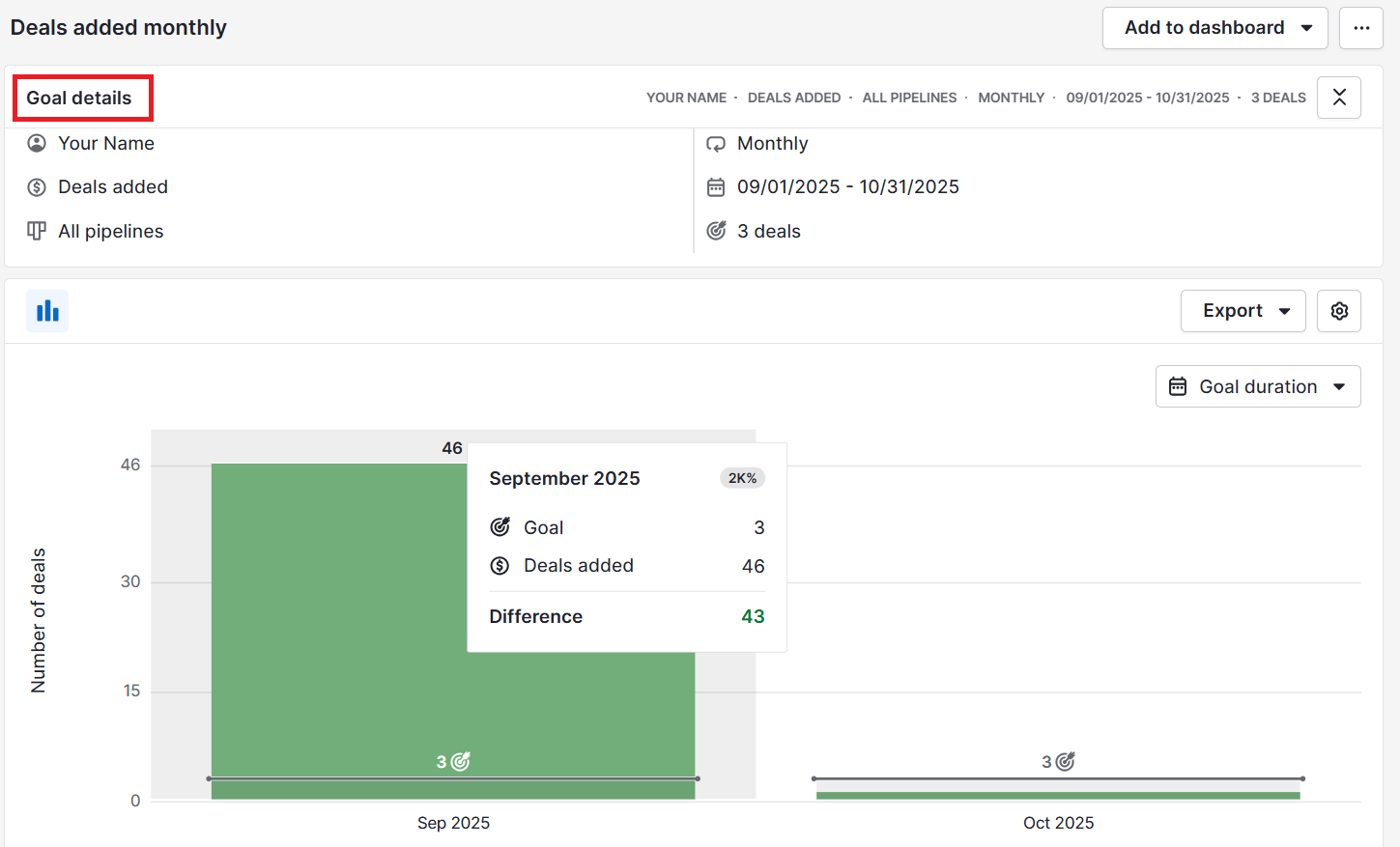
Set a timeframe and assign the relevant stakeholders. Visualizing your progress is a great way to motivate your team.
Pipedrive in action: Tour and activity booking company TrekkSoft aimed to increase sales in specific areas and verticals. With Campaigns by Pipedrive, it personalized emails to each segment, increased email sends from 500 to 4,000 per week and doubled sign-ups.
2. Define and segment your ideal customer for laser-focused targeting
Focus on the customer groups that generate the most revenue instead of relying on broad buyer personas.
Strategic marketing is most effective when it reaches the customers who matter most to your business. Chasing every possible lead can spread resources thin.
Look at the closed deals in your CRM and see if you can find and see if you can find patterns in:
Deal size – which customers bring the most revenue?
Sales cycle length – who tends to close faster?
Close rate – which types of customers are most likely to convert?
Lifetime value – who renews or expands their contracts?
From there, group similar customers together. Aim for around two or three main segments that represent most of your revenue.
Example: The SaaS company finds that creative agencies close quickly and adopt premium features, but their budgets are smaller and these customers churn more often. Consulting firms take longer to decide, but when they do, they bring bigger contracts and stay longer.
Map out pain points, buying behavior and preferred channels for each segment to create marketing campaigns that speak directly to those groups.
Note: If you have access to more detailed data, you can create in-depth marketing segmentation based on factors like customer demographics or purchase history. This approach lets you refine your value proposition and make more confident marketing decisions for each group.
3. Choose marketing channels that fit your resources and feed your sales process
Spreading efforts across every possible platform can drain resources and dilute results.
Instead, pick two or three channels. When evaluating these channels, consider:
Resource requirements – can you use the channel consistently with your current team?
Audience alignment – are your target customers active and reachable there?
CRM integration – can you track leads from this channel through your sales pipeline?
Measurable ROI – can you link activity on this channel directly to closed deals?
While limiting the channels you use seems counterintuitive, it lets your SMB team invest their time where it matters most.
The result? Greater customer engagement and improved conversion across your campaigns.
Example: The SaaS team focuses on LinkedIn and content marketing. Consulting firms in the brand’s target audience spend time on LinkedIn, where case studies and posts build trust. Creative agencies respond better to practical blog articles that show how the software saves time.
4. Measure your success through sales outcomes, not marketing metrics
At this stage, focus on immediate sales outcomes that show whether your marketing activities are helping deals move forward.
Traditional marketing metrics like email opens, website traffic and social media engagement don’t directly predict revenue. Instead, focus on signals like:
Lead-to-opportunity conversion rate. The percentage of marketing-sourced leads that become qualified opportunities.
Opportunity-to-customer conversion rate. How many of those opportunities turn into paying clients.
Time to close. How quickly marketing-sourced deals move from first contact to signed deal.
With Pipedrive, you can easily see how many of your leads convert with the deal conversion report.
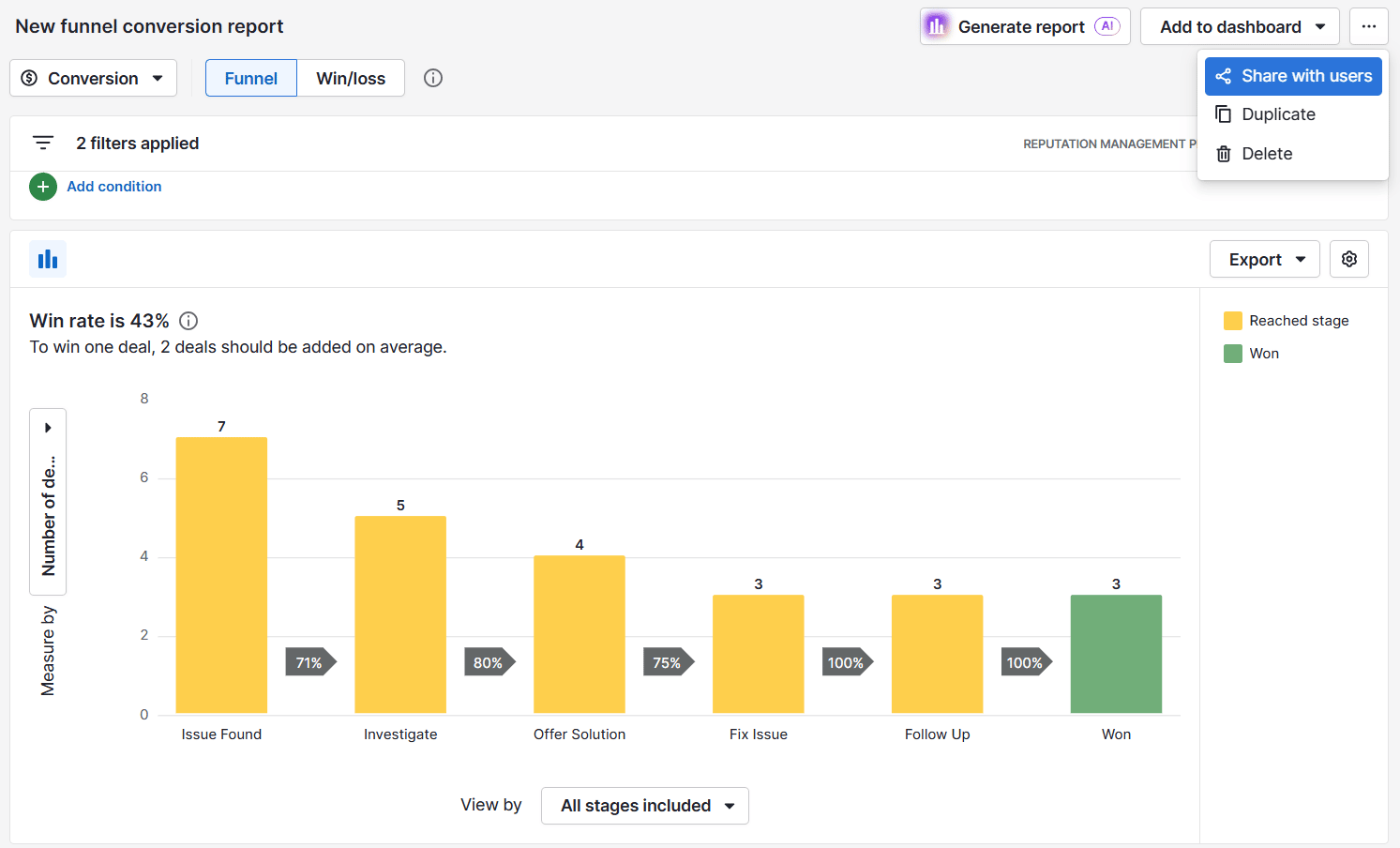
You could even add custom labels to deals that come from your marketing campaigns (like “Newsletter” or “Facebook ad”).
Then, you can filter for those labels in the conversion report to see how well leads convert from specific campaigns.
Remember, sales metrics don’t just indicate how successful your campaigns are. The data also shows you where to focus your efforts to reach your goals faster.
Example: The project management SaaS sees that leads from case study downloads move through the pipeline faster than article lead magnet downloads. The marketing team decides to prioritize case studies next quarter.
Having marketing metrics and sales data at your fingertips empowers you to make more confident decisions and helps your teams stay focused.
Pipedrive in action: Digital agency Spark Interact created custom dashboards in Pipedrive to track campaign results and daily KPIs. This visibility helped it identify top-performing sales and marketing strategies, leading to a 12% average annual revenue increase.
As Marketing Technology Specialist Mackey Kandarajah observes: “With marketing and sales data housed in one place, the team gains a clear view of which content truly moves prospects, allowing them to refine strategy in real time and convert interest into long-term client relationships.”
Now that you know how to structure your marketing strategically, learn how to execute that framework in practice with concrete tactics ideal for SMBs.
Proven strategic marketing tactics for resource-strapped SMBs
Strategic marketing campaigns don’t need to be flashy to get results.
The tactics below work because they directly support sales and move deals forward.
Align email marketing campaigns with your sales stages
Develop email sequences that mirror your sales process. Instead of generic newsletters, create targeted campaigns for each buying stage:
Awareness – product marketing and educational content addressing pain points.
Consideration – case studies and product comparisons.
Decision – testimonials and implementation guides.
Post-purchase – onboarding resources and referral or partner programs.
Planning campaigns with these stages in mind ensures you meet customer needs throughout their buying journey.
Here’s an onboarding email example from product analytics platform Posthog:
The email works because it focuses on the onboarding stage and directly addresses what the user needs to do next.
It sets clear expectations for how often emails will arrive and maintains a personal, approachable tone that encourages engagement.
Create content for in-market buyers
Content is most effective when it speaks to people further along in the marketing funnel who are already evaluating solutions.
Instead of broad awareness pieces, focus on bottom-of-funnel (BoFu) assets that help prospects choose your product.
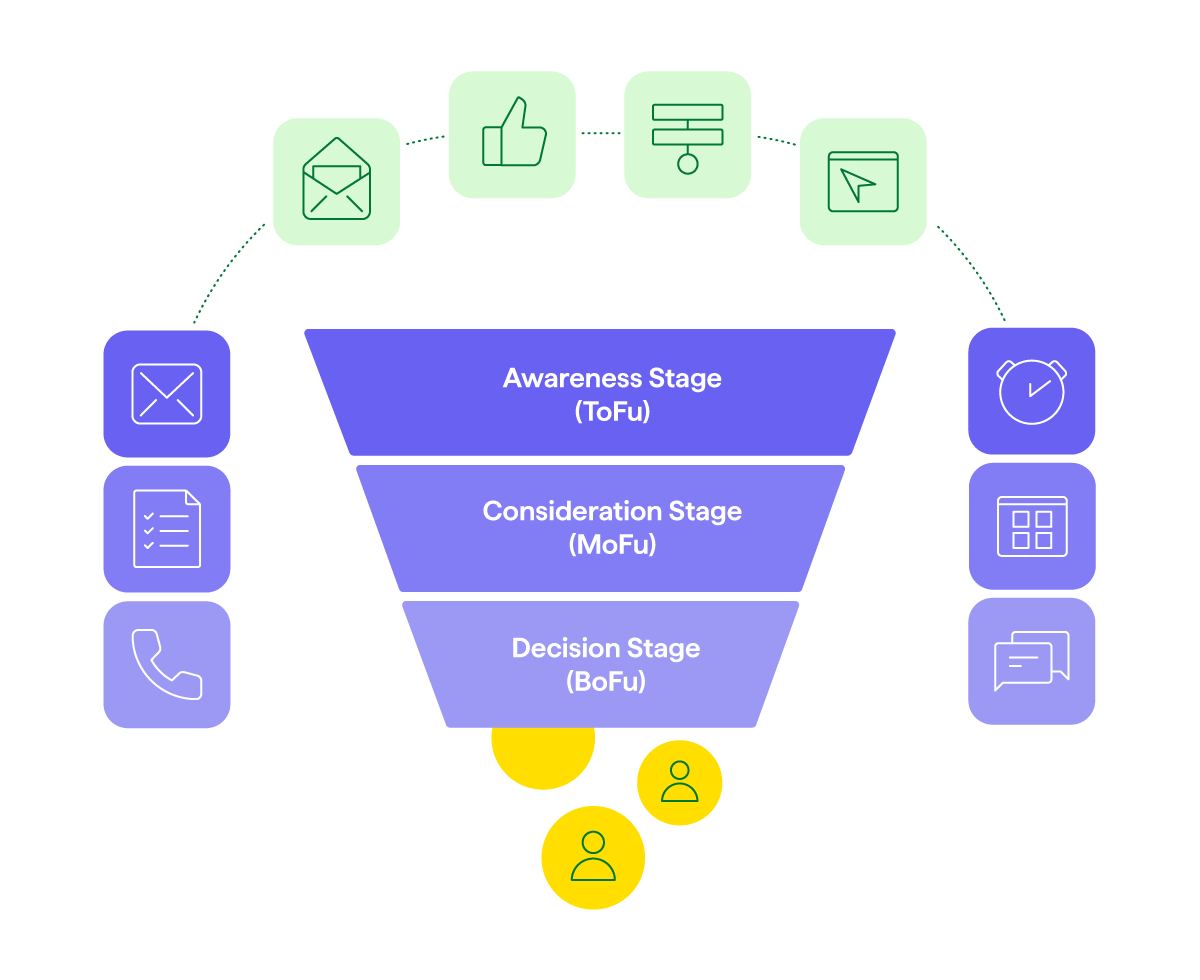
Comparison guides and “top X software” roundups often have much higher conversion rates than top-of-funnel content and help secure your market position.
Work with your sales team to surface common objections and decision factors, then create content that addresses them head-on.
Here’s an example from time-tracking app Buddy Punch:
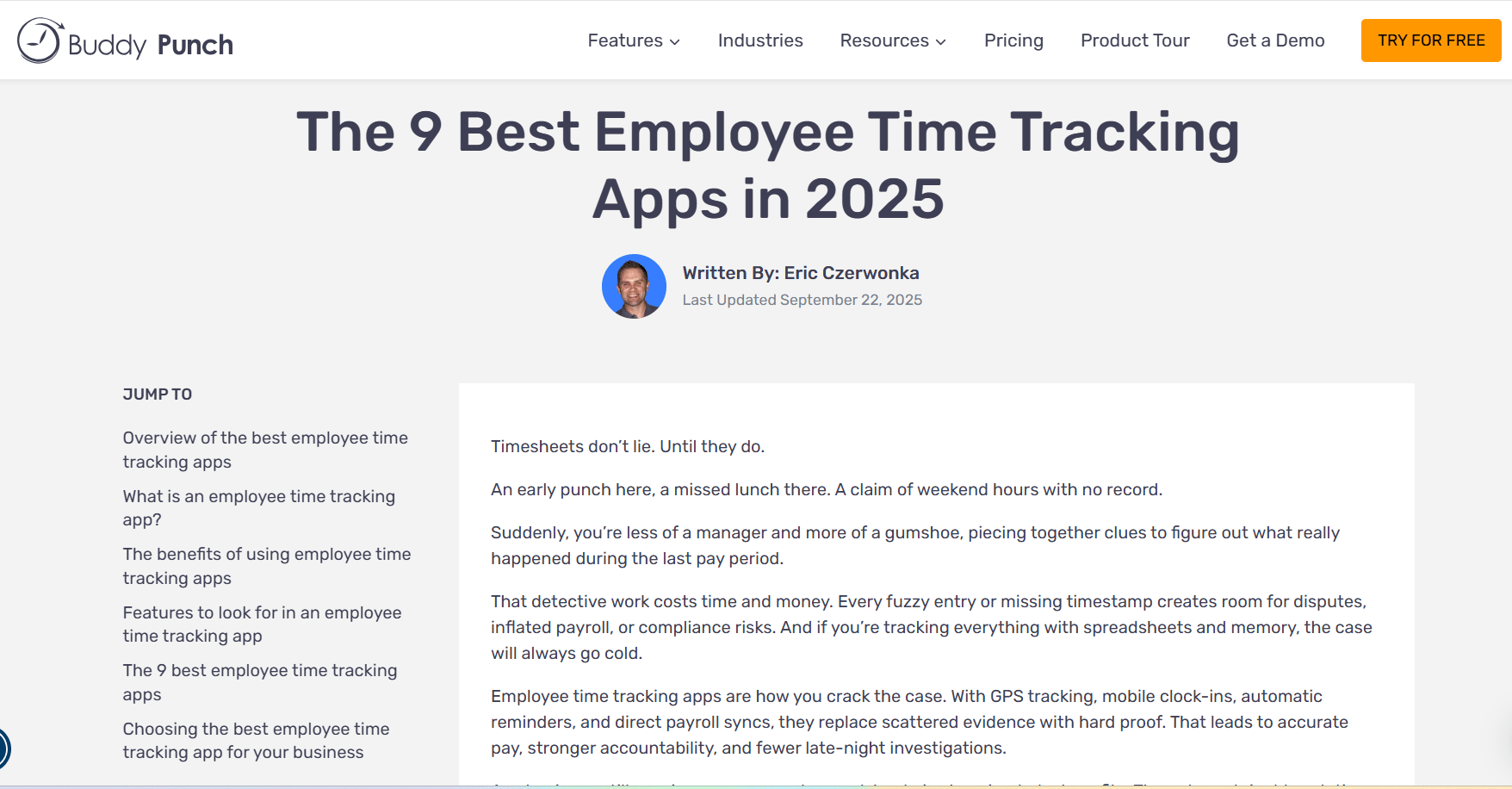
The introduction speaks directly to its customer base by addressing pain points head-on. The rest of the article shows how Buddy Punch solves those problems and offers alternative solutions.
Build relationships on LinkedIn for social selling
Equip your sales team with LinkedIn social selling strategies that complement marketing efforts.
Share valuable industry insights or new products, engage with prospect content and build relationships with your target market.
Here’s how Will Allred, co-founder of AI email assistant Lavender, connects with sales teams on LinkedIn:
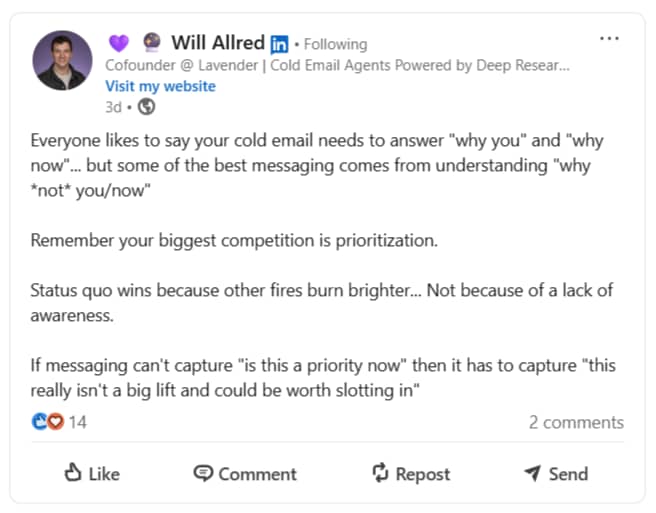
Coordinate your social media marketing efforts with marketing campaigns. When the marketing team publishes new content, sales reps can share it with relevant prospects while adding personal commentary.
When marketing runs LinkedIn ads, the sales team can follow up with warm messages to engaged prospects.
Run referral or affiliate programs
Referrals are among the most cost-effective ways for small businesses to grow.
Your program could be as simple as a discount for referred clients or as formal as an affiliate program with recurring commissions.
Here’s an example from Senja, a customer testimonial tool:

Its affiliate program clearly outlines how partners earn commissions, making it easy for customers to share the product and earn rewards.
A clear, consistent sales referral system means you can turn happy customers into one of your strongest acquisition channels.
How to measure strategic marketing success over time
Along with tracking immediate results, it’s essential to monitor longer-term trends that show the overall impact of your marketing efforts.
These metrics reveal whether your strategy is sustainable and scalable, not just effective in the short term:
Metric | Details |
| |
Pipeline velocity |
|
| |
Revenue per lead |
|
Alongside these metrics, examine marketing attribution to learn where leads came from and which campaigns influenced their decisions.
The simplest starting point for SMBs is single-touch attribution. It credits just one touchpoint per conversion, while multi-touch attribution splits credit across all interactions.
You can track attribution through tools like Google Analytics or a platform like Dreamdata.
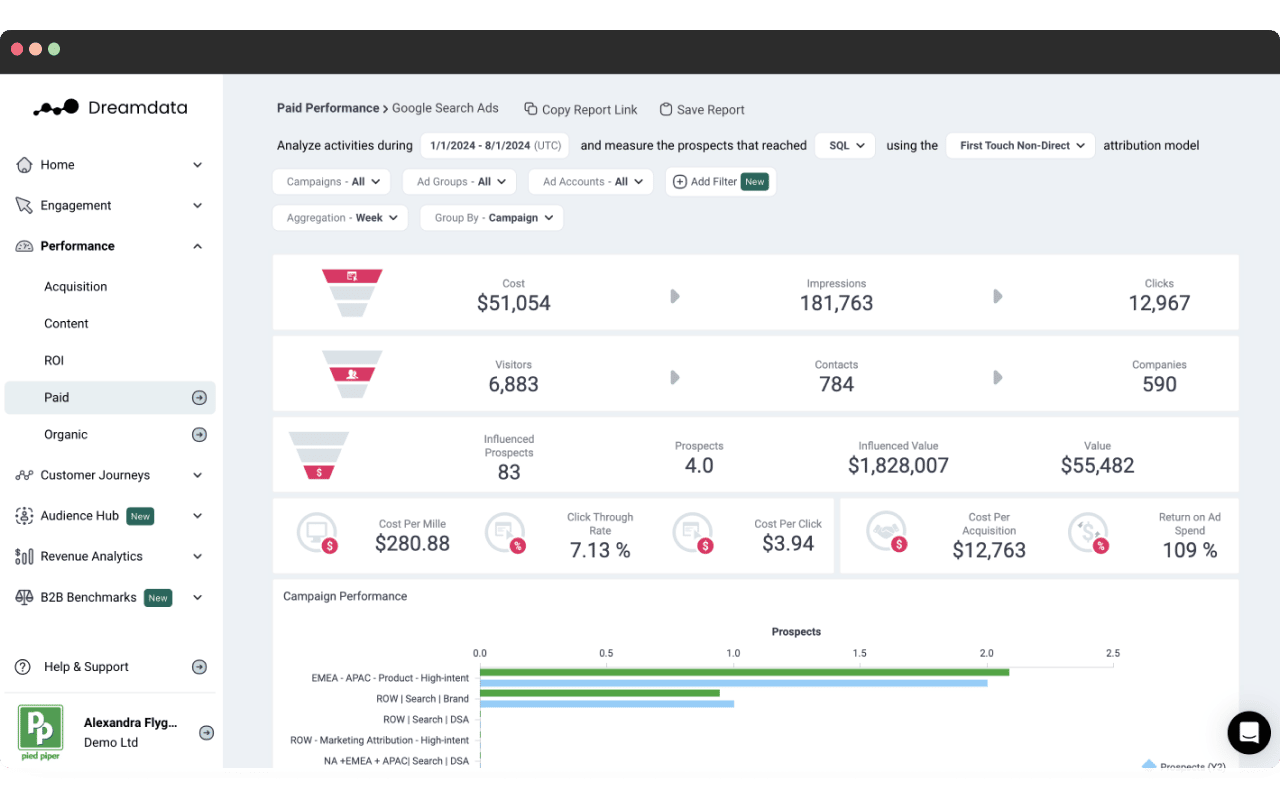
Dreamdata integrates directly with Pipedrive to sync conversions automatically and link leads and digital marketing campaigns to your revenue. You can easily identify your most successful campaigns without creating complex dashboards.
Even with the right tools, SMBs can fall into pitfalls when implementing strategic marketing. Awareness of the risks helps your business manage its marketing efforts safely and successfully.
Common strategic marketing mistakes SMBs make
Avoid these mistakes to protect your marketing budget and make your campaigns more effective.
Copying enterprise tactics without the resources to execute them
Enterprise marketing strategies need dedicated teams, big budgets and sometimes complex new technology.
Small businesses should focus on simplified versions that fit their constraints. For instance:
Create basic qualification criteria based on company size and budget instead of complex lead scoring
Develop a few targeted email campaigns for the primary customer segments instead of elaborate automation sequences
It’s best to start small. You can always add more complexity as your strategic marketing and sales processes evolve.
Spreading efforts too thin across different channels
Focused marketing on two or three channels can deliver better results than implementing efforts across many platforms.
When you master a few key channels, you can create higher-quality content and build stronger engagement with prospects.
Pick channels where your target audience is active and you can execute consistently. Build expertise in these areas before expanding to new ones.
Running marketing separately from CRM and sales processes
Connecting marketing directly to your sales processes improves conversions and keeps leads moving forward.
Here’s how to link the two:
Build CRM integration into every marketing campaign from the start
Set up lead capture forms to automatically create CRM records
Configure email campaigns to track engagement in your sales system
Campaigns by Pipedrive connects email marketing directly to your CRM, so every email interaction automatically updates contact records.
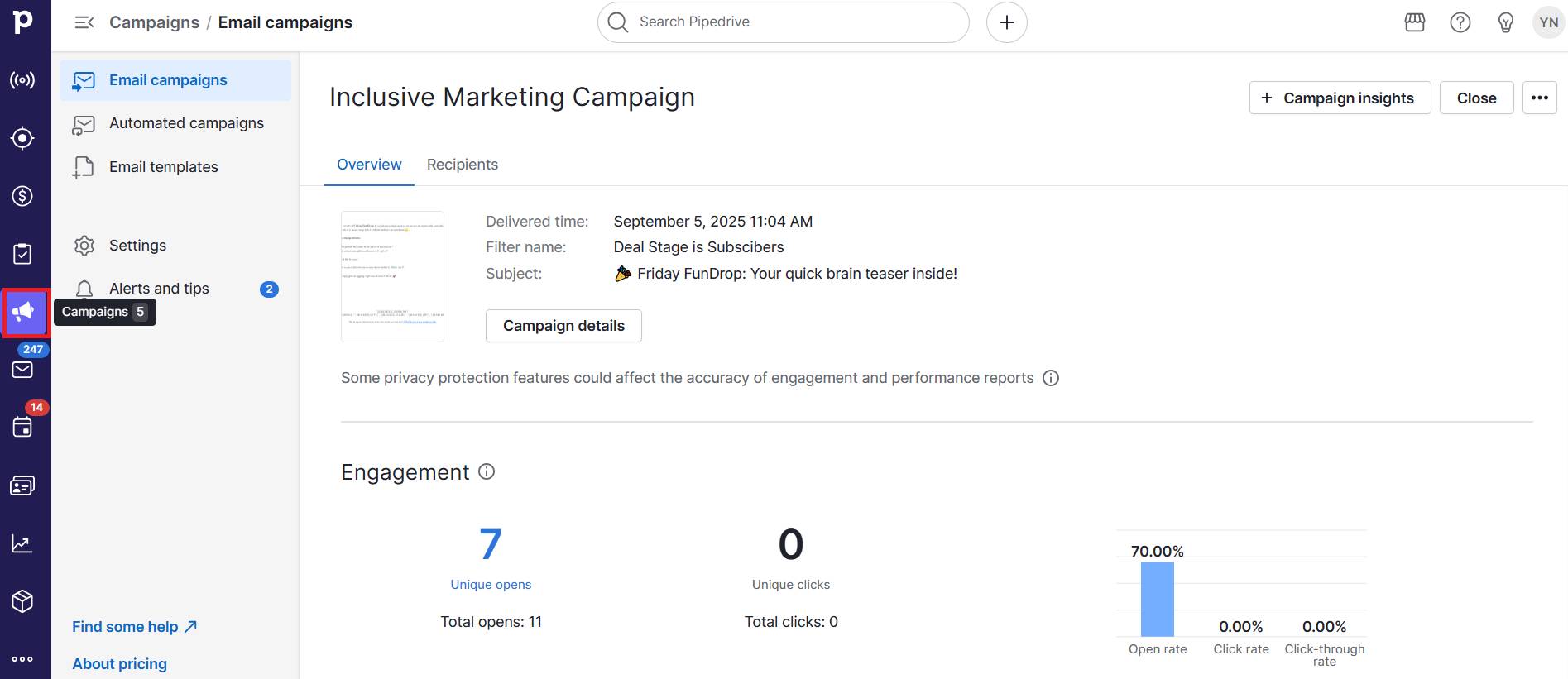
When your email marketing lives inside your CRM, your sales reps can see which prospects engage with content and tailor their outreach accordingly.
Pipedrive in action: Trainify, a corporate education company in Latvia, uses Campaigns by Pipedrive to connect its email marketing with the CRM. This two-in-one functionality saves Trainify two hours per week on campaign creation and management while automatically tracking interactions to support sales follow-up.
Focusing on brand awareness instead of lead generation
Brand awareness works best as a side benefit rather than the primary goal.
Small businesses get better ROI from demand generation that directly feeds the sales pipeline.
Focus on creating content that captures contact information and moves prospects toward purchase, like webinars or free templates that solve a specific challenge.
Your brand naturally builds market share through valuable, lead-generating content that solves real customer problems.
Final thoughts
The strategic marketing process isn’t about having the biggest budget or the largest team.
Focus on the most impactful marketing initiatives for your small business to turn strategy into a sustainable competitive advantage.
Tracking your marketing campaigns’ performance is key to effective marketing and sales success, helping you see what works and optimize it for improved results.
Pipedrive supports a strategic approach by connecting your leads, sales activity and revenue in one place – try it free for 14 days.





